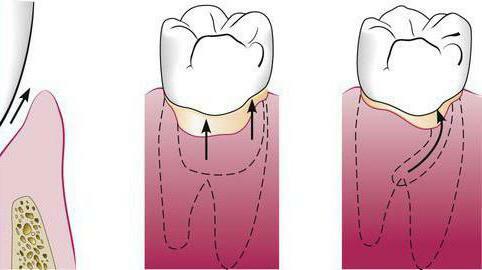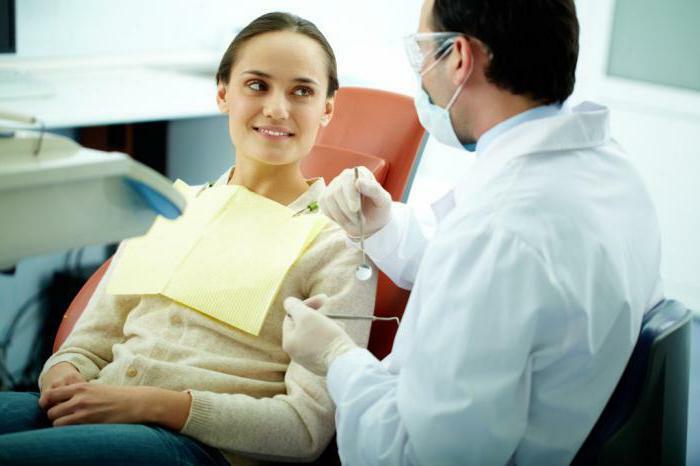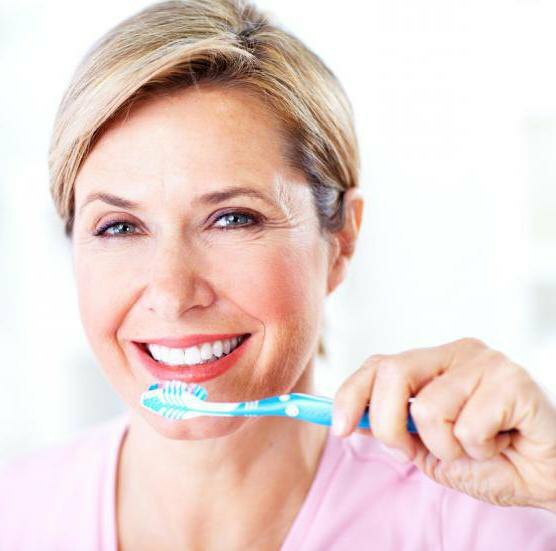Periodontal pocket: inflammation and treatment
Improper oral care leads to plaque and stones. As a result of pathological processes, inflammation begins. At first his symptoms are harmless enough. There is a slight bleeding gums, swelling, and sometimes soreness. Gradually, the mobility of the teeth increases, possibly the appearance of a purulent secretion. At this stage, we already talk about neglected periodontitis. To cure this disease, the curettage of the periodontal pocket is used. What is this procedure? What other methods are used to combat the disease? The answers to these questions can be found in today's article.
Brief description of the problem
Against the backdrop of inflammation, bone tissue is gradually destroyed and replaced by granulation. The latter consists mainly of osteoclasts and microbial elements. Day by day, they spread to all new areas, leading to an even greater atrophy of the alveolar bone. There is a free area where there is no fixation of the gum to the surface of the tooth root. 
As a result of the described changes, the periodontal pocket is formed. This space is equal in size to the area of the destroyed bone. Its contents are represented by granulation tissue, food remnants and a purulent secret. By the size of the formed gap, the degree of deformation of the tissues is judged. In a healthy person, the depth of the periodontal pockets is no more than 3 mm, so that the cavity can be cleaned without obstruction from food debris. If this value exceeds the specified size, there are certain difficulties in caring for the oral cavity. The probability of inflammation of the gums increases several times, which leads to the appearance of stone and plaque. The result of active tissue destruction can be a tooth loss.
Diagnosis of pathology is performed by means of X-ray examination or a periodontal probe. The lack of quality treatment over time leads to a deepening of the pocket. The consequence of this process is the movement of the teeth into a "fan" position.
Reasons for the formation of the pocket
The main reason for the formation of the periodontal canal is poor oral hygiene. Incorrect brushing of teeth or lack of teeth leads to the accumulation of bacterial deposits in the crown area. On the entire surface of the enamel of the tooth, the microbes form a thin invisible film and begin to release products of their own vital activity. This is the inflammation of the periodontal pocket.
Risk group
Among the factors provoking the growth and reproduction of pathogenic flora, it can be noted:
- improper diet consisting mainly of carbohydrate products;
- poor oral hygiene;
- addictions;
- disorders at the hormonal level;
- immunodeficiency;
- of a dental disease;
- incorrect bite;
- poor-quality seal installation.
Symptoms of inflammation
The formation of the periodontal pocket can be asymptomatic for a long time. With the development of the inflammatory process, a characteristic clinical picture appears:
- discomfort in the gum area;
- bad breath;
- swelling, bleeding and redness of the gums;
- , palpation can produce a purulent secretion;
- widening of the interdental spaces;
- general condition deterioration.
If you have any of these problems, contact your dentist. A doctor's help is required even if the inflammatory process has affected only one tooth. Every day the situation will only worsen, which can lead to the progression of the ailment. 
Treatment Methods
Before the start of therapy, diagnostics is performed, with the help of which the doctor determines the degree of neglect of the disease. If the periodontal pocket does not exceed 0.15 mm and there are no signs of inflammation, therapeutic methods are used. The following procedures are usually used:
- Hygienic cleaning with ultrasound. During removal of the stone and plaque, the gum is not damaged.
- Medication. Assigned immediately after ultrasonic cleaning. At an easy degree of pathological process, aseptic treatment( baths, irrigation, rinsing) is used. During the procedures apply "Chlorhexidine" or "Miramistin".In particularly serious cases, the patient is prescribed a course of antibiotics. The most effective are the following drugs: "Amoxicillin", "Lincomycin" and "Azithromycin".
The listed procedures are ineffective if the depth of the pocket is more than 2 mm. The doctor can not completely remove the accumulated stone. In addition, the likelihood of additional traumatization of periodontal disease increases. As a result of the manipulations, the inflammatory process and tissue destruction begin to progress.
In case of a complicated course of the disease, surgical intervention is recommended. This method of treatment implies a mechanical effect of dental instruments on the subgingival areas. Currently, the most effective procedure of this type is curettage of the periodontal pocket. What it is? There are several types of manipulation: closed, open and patchwork operation. The procedure itself allows you to get rid of all the problems caused by periodontitis. Let's consider each of its variants in more detail. 
Open curettage
Such intervention requires a doctor of high professionalism. Therefore, this service is not provided in all medical institutions. The duration of the procedure is about 2.5 hours. It consists of the following stages:
- Cleaning of teeth from stone and plaque.
- Use of anti-inflammatory drugs.
- Shinning of mobile teeth.
- Cutting the gingival graft with a scalpel.
- Removal of granulations and stones with ultrasound.
- Antiseptic treatment of the roots of the tooth.
- Placing in a pocket of synthetic tissue to enhance the growth of natural bone.
- Stitches and closure of the damaged area with a gingival dressing.
After about 1.5 weeks, the seams are removed. A few months later, the final restoration of damaged tissues. The gingival papilla can completely cover the gaps between the teeth. In some cases, open curettage of periodontal pockets leads to the denudation of the roots. Therefore, for some time it is recommended to stop using hot, sour and cold food. 
Closed curettage
The operation is effective at pocket depths of 3-5 mm. Intervention is not difficult. It consists of the following steps:
- Gum examination.
- Introduction of local anesthesia.
- Treatment of periodontal pockets without dissection of the gum.
- Polishing of the roots of the tooth.
Intervention can simultaneously affect 2-3 teeth. Wound healing takes place in one week, but it takes about a month to complete the restoration. So much time is needed to form connective tissue and attach the gum to the tooth. The main disadvantage of the procedure is that the doctor at the time of manipulation does not see if all pathological formations have been removed.
If the depth of the pocket is more than 5 mm, the closed curettage will only stop the progression of periodontitis. Partial removal of deposits and granulations allows you to get a temporary respite, but in almost all cases the ailment resumes its development.
Patchwork operation
This surgical intervention involves the dissection of the gum to gain access to the periodontal pocket. It is recommended if its dimensions do not exceed 4 mm.
First, the doctor makes two small incisions with a scalpel and exfoliates the muco-periostal flap. Then a standard mechanical cleaning of the pocket and polishing of the tooth surface is carried out. After the treatment of hard surfaces is completed, soft tissue preparations are switched over. The flaps are put in place. At the end of the procedure, an osteogenic drug is applied to the affected area, and the gum is sewn up. The whole operation lasts no more than 40 minutes, but implies the use of local anesthesia.
Some patients are additionally prescribed wound-healing agents for external use( eg "Furacilin").Also recommend the use of ointments to stimulate the process of epithelialization of the gums( "Actovegin", "Solcoseryl").
Vacuum curettage
In the presence of purulent abscesses and deep pockets( more than 5-7 mm), vacuum curettage is used. Cleaning is carried out using anesthetics. During this procedure, the doctor first scrape off the deposits of the stone, and then polishes the tooth tissue. After this, the specialist begins to remove granulations and damaged epithelium from the inner walls. The periodontal pocket is cleaned with a vacuum device, which from the bottom of the cavity sucks the necrotic masses along with the stone fragments. At the final stage, washing with antiseptic preparations is mandatory.
Vacuum curettage is characterized by high efficiency. The procedure restores the lymph flow in the tissues, decreases the depth of the gingival pockets and eliminates all inflammatory processes.
Postoperative period
To not open the periodontal pockets, it is recommended to give up eating and drinking within 10 hours after all manipulations. To obtain the desired result, you should carefully brush your teeth, while using a soft-nosed brush. The problem zone must be avoided. In a week, you can start rinsing. To do this, use a weak saline solution or "Chlorhexidine".
With regard to nutrition, first preference should be given to soft or mashed food. It is strictly forbidden to use cold or excessively hot drinks. For a week after curettage periodontal pockets, it is recommended to abandon physical activities, exercise, visiting the sauna. In the postoperative period, it is important to monitor the condition of the oral cavity. You can use hygiene products designed for sensitive teeth. If necessary, you need to contact the dentist. The specialist will select procedures to reduce the sensitivity of the neck of the teeth.
Patient Reviews and Price of Services
The cost of treatment for periodontal pockets in Russia varies slightly. Among the main factors that influence pricing, we can mention the method of anesthesia and the technological capabilities of a medical institution. Not the last aspect is the status of the clinic. On average, the closed curettage of periodontal pockets costs in the range of 5-12 thousand rubles. The procedure for an open type is slightly more expensive( 9-18 thousand rubles).
Most patients who have experienced this pathology prefer surgical intervention. In their opinion, the operation is the only way that can permanently rid the problem. It is better to resort to an open type of intervention. This technique allows not only to eliminate the damaged elements, but also to restore the lost bone with time. The only drawback of the procedure is a long healing period. Less painful is characterized by closed curettage of the periodontal pocket. The patient's feedback indicates that his help should be used only at the initial stage of the pathological process.
Opinions on therapeutic treatment diverge. Most patients do not recommend this method of solving the problem, since it allows only temporary relief of symptoms. 
How dangerous is the inflammation of the pocket?
Periodontal pocket is a serious pathology that requires timely and competent treatment. The absence of therapy can lead to complications. Among them, the most dangerous is an acute abscess, which subsequently acquires a chronic course. It is characterized by an increase in the mobility of the teeth and the appearance of pain syndrome. In this state, it becomes difficult for a person to chew food. Neglect of pathology over time leads to the fact that the tooth completely falls out of the alveolar socket. The development of the inflammatory process ends with lymphadenitis and general intoxication of the body.
Prevention of recurrent disease
It is not necessary to ignore the inflamed periodontal pocket. Treatment, conducted in a timely manner, increases the chances of a full recovery. However, this does not mean that now you can not visit the dentist. After the course of therapy, it will be necessary to pay a visit to the doctor again, and the specialist himself sets the specific time, taking into account the neglect of the disease. On examination, the dentist will be able to determine the success of the treatment, give recommendations for oral care.
Qualitative daily hygiene of teeth allows to avoid formation of a stone, to prevent inflammation in the periodontal pocket. It is not superfluous to consider professional cleaning of the oral cavity once a year in the dental center.
